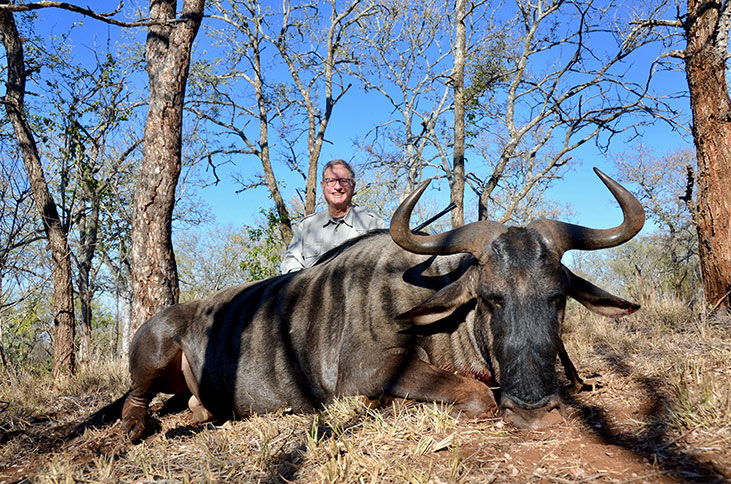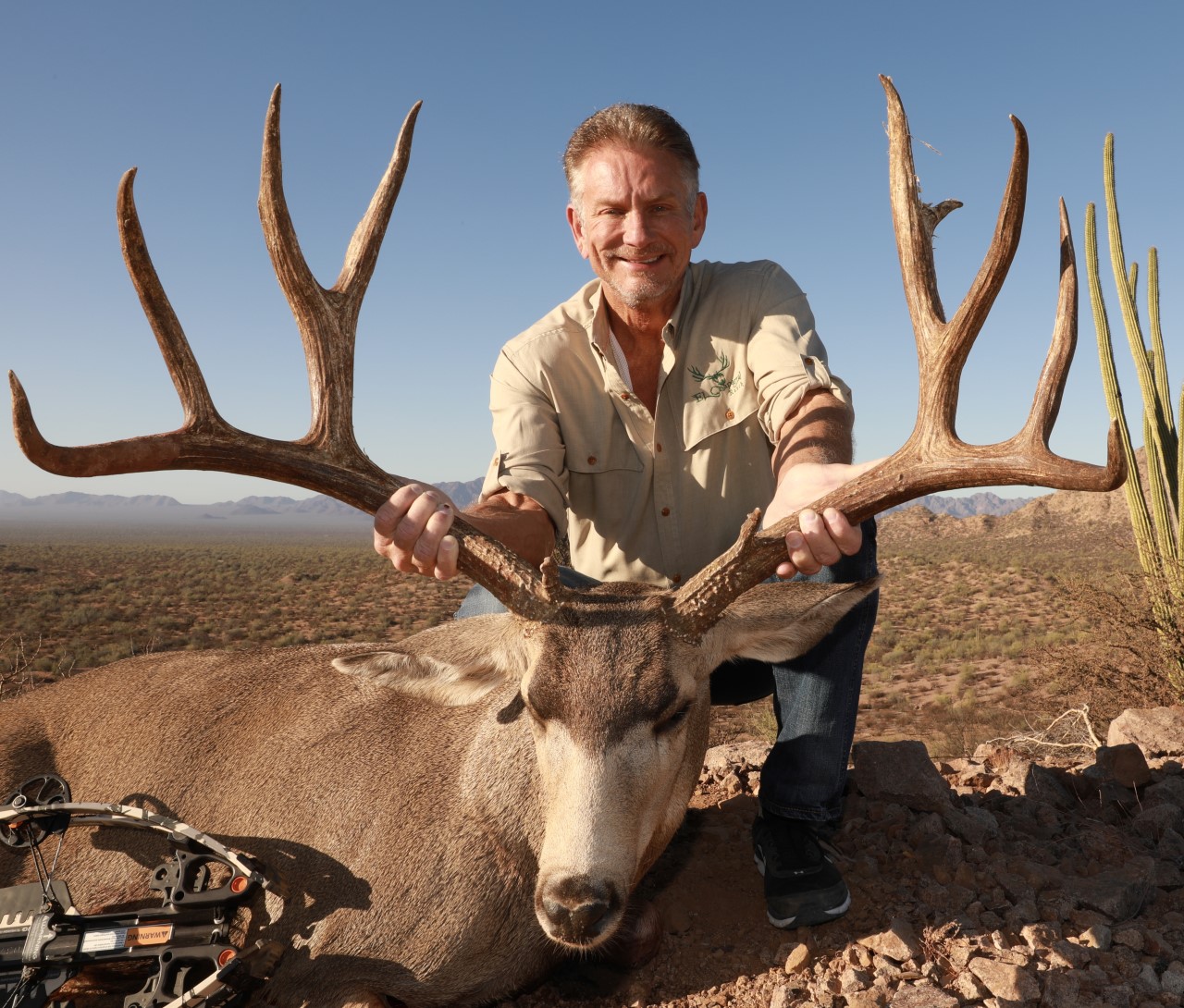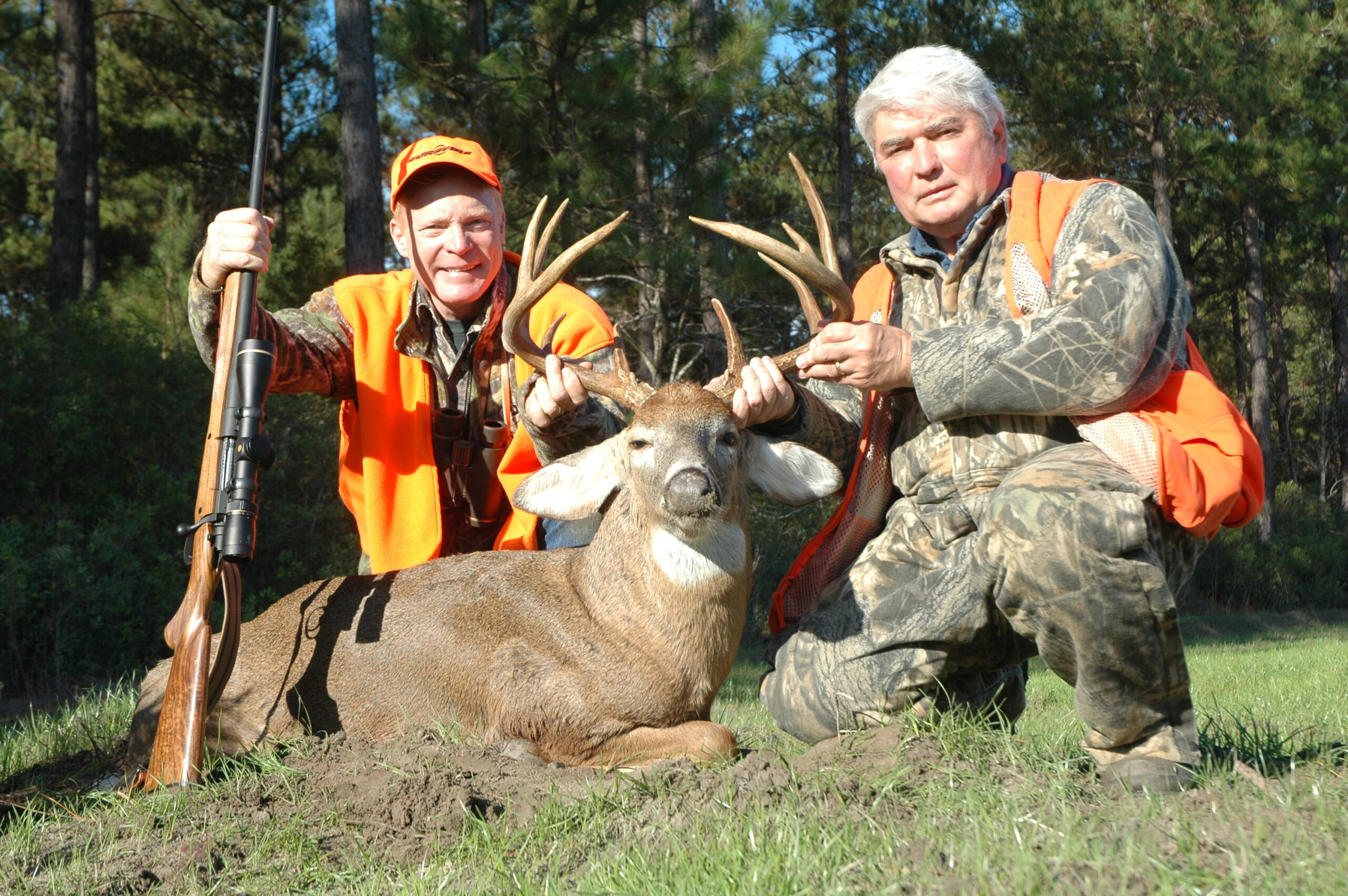In 1859, Charles Dickens published the novel A Tale of Two Cities. While that story focuses on Paris and London, two of the most beautiful cities on earth, my life can be described as a Tale of Two Beauties. One is Sharon, my wife of nearly 50 years, and the other is the legendary nyala of Africa.

As to the nyala, in an issue of Safari Times, Craig Boddington asked the question: “Which is Africa’s most beautiful antelope?” He answers: “I think honors go to the nyala bull.” Well, as for me, honors go to my wife – the most beautiful and kind-hearted person I know.
As we were sitting at home planning our 50th anniversary, Sharon looked up from our guest list and said: “Hey Tom, my anniversary present to you is for us to go back to Africa and fulfill your lifelong hunting dream, the quest for a nyala bull.”
Sharon’s lifelong dream was to go to Paris, so I responded – “Let’s pursue both dreams together. Paris, the City of Lights for you, and Africa, the land of the nyala for me. So, with that, our planning began in earnest.
First up would be Africa for nyala, but where in Africa? According to Boddington, the nyala is native to the warm climates of KwaZulu-Natal in South Africa and central Mozambique. Though introduced in other parts of Africa, I wanted to hunt them, if at all possible, in their natural homelands.
That settled, I began my search for the best outfitter to accomplish my goal. Starting with the pages of Safari Magazine and progressing to the SCI convention, my search became more focused. Looking for those operating in KwaZulu-Natal, I soon found what I was looking for – Harloo Safaris and Edmond Rouillard. He was the right man operating in the right place for just the right trophy.
My go-to rifle for plains game is an old Model 70 Winchester in .300 H&H Magnum powered by 180-grain Nosler Partition bullets custom loaded for me by Nosler. Things were rounded out with a Leupold 2.5-8 illuminated reticle scope. I decided to take along my Ruger M77 Mark II chambered in .416 Rigby, supported by several boxes of Federal 400-grain bullets, in the event we had an opportunity to take something requiring more horsepower than a .300 magnum. My Ruger was topped with a Leupold 1.5-5 scope. As things turned out, my intuition to take a big bore rifle was right.
Practice at my local rifle range assured me that everything was working fine. I was pleased to record inch-and-a half groups with both rifles. Firing first from the bench, then with shooting sticks and finally offhand gave me the confidence. As an added bonus, my trips to the range always include sharing hunting stories with the other hunters at the range.

After a smooth flight to Johannesburg, the folks at AfricaSky House met us at the airport and whisked us through customs and onto their lodge where we spent our first night. I always spend the first night near the airport of arrival so as to allow guns and gear to catch up in the off chance they are delayed along the way. Harloo arranged for a driver to pick us up and drive us to their hunting lodge near Pongola. Our PH, Greg Lawson, and outfitter Edmond Roullard met us at the lodge and laid out their plans for our hunt.
My previous plains game hunting had been in Namibia. Open terrain and long shots were the order of the day, but I discovered that nyala hunting in the KwaZulu-Natal region would be a whole different experience.
Lawson told me that we would scout in a safari vehicle – sometimes spotting a fleeing bull off in the forest and sometimes locating one by cutting and following tracks. Once things looked promising, we would hop down from the vehicle and push into the forest, searching for our elusive prize. Even in this nyala-rich region, good bulls are likely to require lots of patience and plain old fashioned leg-fatiguing tracking.
When we first arrived in camp, a storm was brewing out in the Indian Ocean. By the time we made it to the field the storm struck, making for a cold ride in the back of the safari truck. After a couple of hours, off in the distance to our right, Greg saw a flash of red showing through the filtered light of the double canopy forest.
Greg recognized it as the coloration of a nyala cow. Where there was a cow there would likely be a nice bull. Off we went, slowly working our way through the jungle-like forest so as to not alert the skittish nyala. We came upon one small herd, then another, neither of which contained the kind of bull we were looking for. It was back to the truck.
Again, visibility was limited due to the dense vegetation. Eventually the sky cleared and the sun made itself felt. Before long I began to feel the oppressive heat and humidity, our clothes were soon drenched in sweat. As we continued searching, we came upon a fresh leopard kill giraffe – a clear affirmation that we were in wild country indeed. The afternoon pressed on and the pace slowed but our senses remained sharp. One of our trackers picked up movement. We came to a silent stop and studied the thicket ahead, hoping that it contained the mature symmetrical bull we were looking for.
The wind was in our favor as we made our slow and cautious approach. We were soon onto our prize – a proud old, grizzled bull that stood his ground. Standing before us was, as once described by no less than Ivan Carter, “The forest ghost of Africa.” We were ever so careful, as we didn’t want to miss this rare opportunity. One mistake and the bull would quickly fade back into the forest.

That majestic spiral-horned legend remained wonderfully unaware of our presence. The sticks came out and I quickly set up. I prayed the hunter’s prayer: “Lord, please don’t let me screw up this shot.” The shot was true, and that bull was ours. Greg reached out to me with a handshake followed by each of the trackers. It was a sweet confirmation of a job well done by all. We loaded our prize onto the truck and headed back to Harloo. That wasn’t the end of the adventure, however.
My wife and I were enjoying the ride back and after half an hour, one of our Zulu trackers motioned off to our left and we came to a quick stop. Greg raised his binoculars and asked if I was interested in a non-typical nyala bull.
“Sure” I said, and the hunt began. Once again, we set off into the forest. The bull was alert to us but not overly frightened. He trotted a bit and then paused to look back. That was my opportunity. Not waiting for the sticks to come out, I placed my crosshairs just behind the shoulder and fired. I now had a beautiful pair of nyala bulls.
It was a very relaxed trip back to camp and time to celebrate with a glass of fine wine. As we gathered around the fire pit, my beloved wife, with whom I have shared many hunts, raised her glass and offered a toast: “To my husband, congratulations to the man I love for such a successful hunt in such an amazing land.” I am truly a very lucky man.
That night we were sleeping soundly when we were awakened by what sounded like a terrifying scream. After that we slept fitfully, but in due course, night gave way to day. Heading to the lodge for coffee, we found Greg and asked, “What was going on last night?” Greg said he heard it too. It was a leopard and most likely a kudu kill. We were indeed in the heart of Africa.
We took a day off so my wife and I could do some wildlife photography. We were soon into zebra, giraffe, kudu, impala, blesbok, blue wildebeest, warthog, and even mountain reedbuck. Later in the safari, we saw elephant, white rhino, hippo and crocodile. It was then that I came to appreciate and admire the steel blue and gray blue wildebeest.
That evening at dinner I asked my PH Greg if we could tackle a blue wildebeest. He said: “Let’s do it. A nice bull would round things out nicely.” We have a beautiful Hartman’s Mountain zebra rug at home and a blue wildebeest rug would make a terrific addition.

A wildebeest also makes for a fine European mount. While most recognize its beauty, many first timers underestimate the toughness of these muscular, robust antelope. Greg said that if I desired to take one, I should leave my .300 H&H in camp and bring my .416 Rigby. That’s just what I did.
When thinking of blue wildebeest, many of us envision vast herds migrating across the Serengeti Plains of East Africa. In the area I was hunting I found things to be somewhat different. Small herds were the order of the day. Cows and immature bulls were to be found in the open, while the old trophy bulls seemed to inhabit the denser forest areas.
We were up early on the last day of our hunt and I grabbed my Ruger and settled into the back of the safari truck. I left my .416 Solids in camp, taking a box of soft-point bullets with me. We did quite a bit of scouting that day with little trouble locating groups of females and immature bulls in the more open areas. So, it looked like we would be back into the forest to hopefully locate that old, heavy-horned, solitary bull we were looking for.
While not as elusive as the nyala, an old trophy bull wildebeest doesn’t get that way by being stupid. After a prolonged search, one of our Zulu trackers, using field craft passed down through the generations, picked up movement in the thickets. This, coupled with the silhouette of what my PH said was a terrific bull, got my attention. The thick forest made it difficult for me to make my own evaluation, but I had learned to trust Greg’s judgment implicitly.
I could only see a small portion of the bull but was able to determine that he was facing me with a slight turn to the left. I was confident that I could thread my .416 bullet through a gap in the branches for a frontal chest shot. At the report of my Ruger, I lost sight of the bull, but Greg, with a big smile, said: “He’s down, great shot.” After a few photos, it was off to the skinning shed and then back to camp. We spent that night around the fire pit reliving the excitement of our successful safari and began planning for the future.

The next morning, as we were driving back to the airport, I began thinking of home and the opportunity to tell my friends of my tale of two beauties … Well, actually four beauties – two nyala bulls, one blue wildebeest bull and the most beautiful of all, my wife of 50 years. Now it’s off to Paris for us.–Tom Nichols




